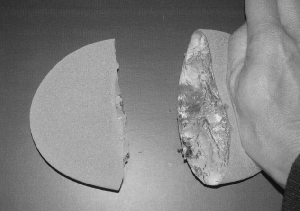Controversy comes to a head as editors advise readers to 'use caution' in their evaluation of a study linking silicone breast implants with platinum toxicity.
The editors of a journal that published a study linking silicone breast implants with higher than normal levels of platinum in the circulation have urged caution when interpreting the findings.
The results of the study, published in May this year, are ’probably flawed’, according to the editors of Analytical Chemistry. The authors of the study reported that women who had received breast implants showed significantly higher levels of platinum in samples of urine, hair, nails and breast milk than woman who had not had implants.
Platinum is used as a catalyst in the production of the silicone gel used in implants, so finding traces of the metal was unsurprising. The alarming twist was that the platinum found was not inert but was in an oxidised, highly reactive state.

The study, funded by the organisation Chemically Associated Neurological Disorders (Cando) in Texas, USA, pointed to previous studies linking these reactive platinum salts with health problems including dermatitis, asthma and carcinogenicity.
The methodology of the study, including the limited sample size of 23 women with just five controls, has been severely criticised. Its publication sparked angry reaction from many chemists including Michael Brook from McMaster University, Ontario, Canada, who has served as a consultant for a breast implant manufacturer. His letter to the editor of Analytical Chemistry was published in June.
Brook pointed out a series of flaws in the design of the study, including the fact that the evidence for the various oxidation states of platinum identified by ion chromatography was unconvincing since no standard samples were shown against the peaks that were observed.
’The authors do not provide sufficient experimental detail to permit their experiments to be reproduced and do not provide convincing data to support their speciation,’ wrote Brooks.
The journal editor, Royce Murray, and associate editor Catherine Fenselau, published an editorial this week conceding that the publication and the media storm it caused had contributed to a drop in the public trust in science.
The editorial continues: ’We firmly believe that journal editors act in the proper interests of science when they allow the publication of work that may prove to be controversial, provided that the science behind the results appears to be solid. In this case, at least some of the science may not meet that mark, despite the rigours of peer review.’
The controversy comes just as the US Food and Drug Administration (FDA) is deciding whether to approve applications from two US silicone breast implant manufacturers, Inamed and Mentor.
Steven Pollack, director of the Division of Chemistry and Materials Science at the FDA, told Chemistry World that the original study raised concerns as soon as it was published. ’We look at all research related to the products that we regulate and these results flew in the face of existing research from both industry and independent scientists,’ he said.
Marlene Keeling, president of Cando would urge the FDA to carefully consider these applications. She told Chemistry World that Cando continues to support the testing of women who have had breast implants, and the testing of their children.
’We feel that there is a lot of bias towards the manufacturers in this case,’ said Keeling. ’The FDA does not require women to be tested following their implants so there is no published information from the manufacturers on this issue.’
Victoria Gill
References
E D Lykissa and S V M Maharaj. Anal. Chem., 78 M A Brook. Anal. Chem., R W Murray and C C Fenselau. Anal Chem., 78






No comments yet